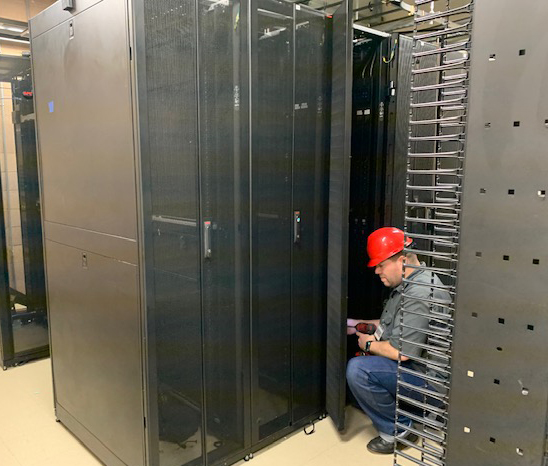For over a decade, Stanford University helped ensure business continuity in case of a large-scale disaster by backing up critical administration and business IT systems in the Livermore Auxiliary Data Center (ADC). But now the university is changing how it uses that space.
After a complex decommissioning process that began in January 2019, University IT (UIT) has removed all IT data and equipment from the Livermore ADC. Soon the space will be returned in its original condition to its previous tenant, the Stanford University Library, to use as part of their archive facility.
More robust disaster response capabilities in the cloud
When UIT’s Cloud Transformation initiative launched in 2017, the initiative’s goals included moving mission-critical applications to the cloud and exiting the Livermore ADC. The move from Livermore to more geo-diverse cloud-based solutions provided added security for Stanford’s data in case of a disaster such as an earthquake.
UIT managed the Livermore ADC space with other campus partners across Stanford, including Stanford Management Company (SMC), Residential & Dining Enterprises (R&DE), the School of Medicine’s Department of Anesthesiology, Perioperative and Pain Medicine, and Land, Buildings & Real Estate (LBRE). These organizations have now moved most of their disaster response (DR) instances to a cloud provider. For clients who didn’t choose a cloud solution, UIT helped them transition to a different on-premise or hybrid solution.
Moving data and removing equipment safely
Throughout 2019, UIT has gradually moved DR instances from its three-room space within the Livermore ADC by backing them up to the cloud or bringing servers back to data centers on the main campus.
Over the past few months, UIT renovated this space to return it to its earlier condition. The space was built out from the Stanford Auxiliary Library - 3 (SAL3) facility in 2009, and included electrical equipment, racks and computer equipment, and the main network interconnections.
Decommissioning the site required the support and coordination of multiple project managers to manage both data migration and changes to the facility infrastructure and networking.
“Dozens of staff members were involved in the project, from groups such as IT Facilities Infrastructure & Resilience to Hosting Services, SUNet Backbone, LAN Engineering, as well as clients such as LBRE,” explained IT Technical Facilities Manager for UIT Thomas Villagomez. His team helped remove racks, cooling equipment, and cabling, and worked with electrical vendors to de-energize the facility.

Planning ahead paid off
Villagomez and his team worked with clients to turn off their services so the team could shut down the power in Livermore to remove existing equipment and set up electrical service for the library’s archive facility.
The team reached out to clients for more than a year to help them transition their systems from Livermore to the cloud or another solution, ramping up their outreach with remaining clients as the date approached.
Villagomez found the work especially rewarding when he saw all the planning come to fruition. He visited the empty, decommissioned space shortly before Livermore came under a shelter-in-place order due to COVID-19. When the order is lifted, the final closeout documents will be filed and the migration finalized.
Leaving Livermore is “a little sad,” said Villagomez, “but overall times are changing.”



